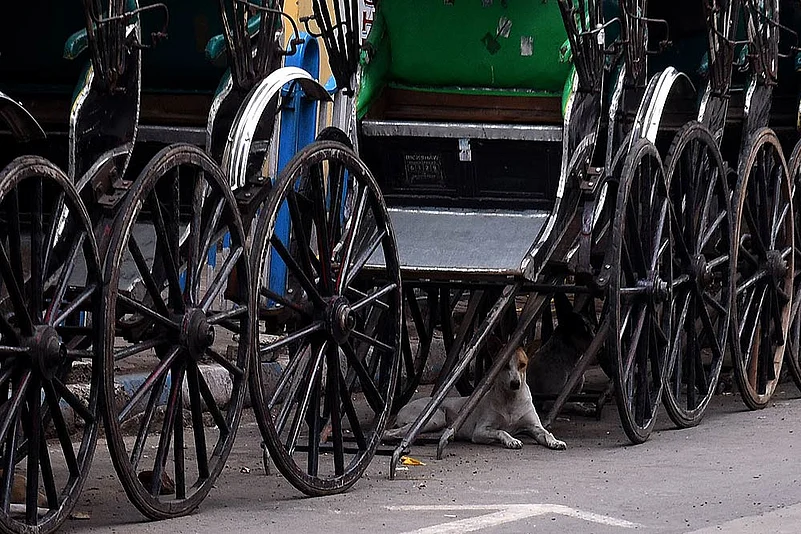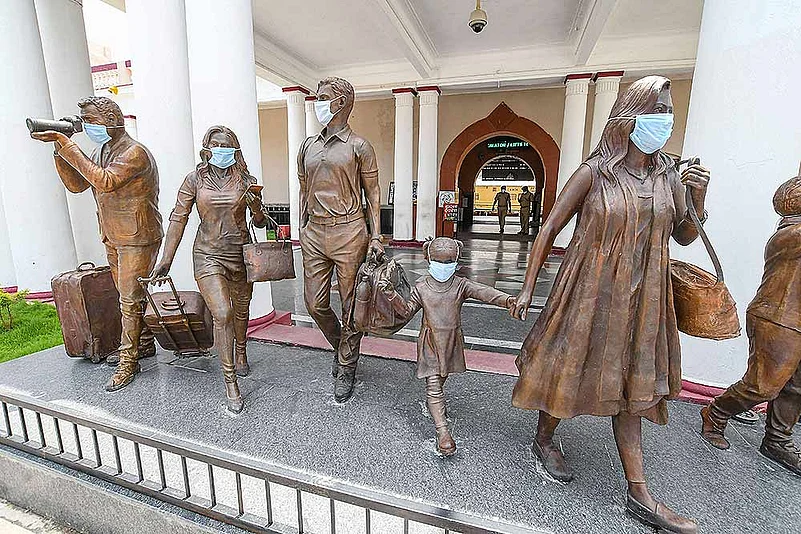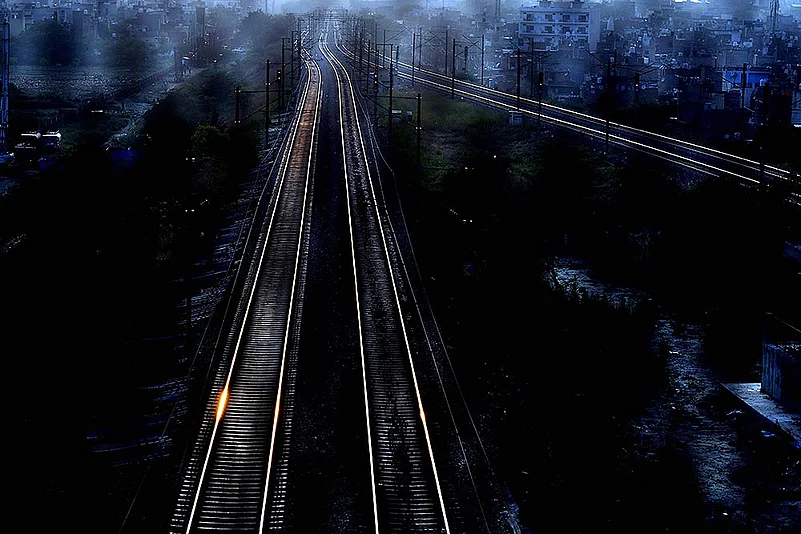The countrywide lockdown expropriated many of our freedoms; under the minatory frown of the state, the external world was packed away into digital realms; our manacled selves (and souls) were to be restored to an earlier state at the pleasure of authorities. Unlock 1.0, therefore, came with new uncertainties, apprehension, and hopes. One overwhelming desire among the citizenry was the innate need to step out—and not only to such pleasant baubles like malls, theatres and other public places, but through physical displacement through a landscape to another place. As if to dispel the taint of two months of confinement one needed an exuberant gesture, an escape from one’s immediate environment.
“I want a breakout from the house, and this town,” sighs Roshan Singh, a Gurugram-based financial advisor with two children. The months of internment, he confesses, has drained his energy. Roshan realises that these are unusual times, but is tormented by an irresistible yearn to travel. No, not a grand wanderlust, but answering the call of the open road—just a few hundred kms away to Rajasthan, or northwards beyond Chandigarh. A long drive in the car! A short weekend getaway! Just with the wife and kids. To away from a big city that’s exhaling fumes of a stalking virus.
ALSO READ: ‘In Future, Tourism Will Totally Change’

Like Roshan, most of us are sick of being afraid, of the barrage of news toting up a daily number of COVID-19 cases. The figures rise inexorably—last week, it crossed the eight million mark across the world, and the 3,00,000 one in India. We are wary of speculating if a vaccine will materialise in a year or 18 months, as the coronavirus goes about its deadly work: claiming lives in our colonies and apartment blocks, on the floors above our flats, among our friends and acquaintances.
Surveys by companies like RailYatri and Airbnb prove the dominant mood for a getaway. They contend that travel is among the topmost things on people’s minds. “Although holidays may not seem to be on people’s agenda, there is an innate interest in travel, and tourists may soon begin to set off to out-of-city destinations,” says E.M. Najeeb, chairman (Kerala Chapter), Air Travel Enterprises Group. Industry stalwarts say that this accreting impulse may drive people to dust down their suitcases by July first week or later, when the monsoon spreads across the country.
Privacy will be the key
Of course, no one expects a mad scramble usually witnessed during vacation time. Given the ongoing crisis, travellers will be cagily cautious. Hence, a certain privacy of their own company will emerge as the most important issue when people venture out of cities. This will translate into specific short-term trends. Firstly, people will favour private transport like self-owned and hired cars, SUVs, small vans and mini-buses, rather than public transport (trains, buses, and flights).
Deep Kalra, founder and executive chairman, MakeMyTrip, agrees, “The pandemic and lockdown has left people longing for travel. Many anxiously wish to plan a getaway as soon as restrictions are removed. The first segment to open up will be the ‘self-drive holiday’ one.” Self-owned cars are safer, ideal for social distancing and can be sanitised. So is the case with hired vehicles. The recent hikes in petrol and diesel prices may prove to be irksome, but the craving to get on the road will be stronger.
Still in the early days of unlockdown, different evidence is found from recent travel trends gleaned by the industry. “Around 95 per cent of the bookings (train and flight) now are for one-way travel. This indicates that traffic is among customers who were stranded during the lockdown and wish to get back to their homes. Three-fourths of the travel is within two weeks of the booking dates, which hints at an urgency,” explains Ashish Dhruva, vice president, Cleartrip.
ALSO READ: ‘It’s An Incredibly Painful Time’
A senior official in Indian Railways confirms this. “At present, we are witnessing an occupancy rate of more than 100 per cent, but this is only in one direction (from bigger cities and towns to smaller ones, or people going back to their villages). On return trips along these routes, the occupancy is merely 20-30 per cent. Even if the government allows trains to ply as per pre-Covid schedules, railways, being a public carrier, will not be a preferred mode. Until the health crisis is resolved, we will be grounded.”
Air travel faces a different dilemma. A senior airline executive says that not much can be experimented with in terms of check-in/check-out and seat arrangement. “The idea that seats can be kept vacant is absurd, as airlines may find it better to keep the planes on the tarmac, rather than fly with less than 70 per cent capacity on profitable routes. There are health-related costs related to PPE kits to the passengers,” he explains. As far as inter-city buses are concerned, Kapil Raizada of Intrcity RailYatri says Uttar Pradesh and Delhi might allow operations soon on select routes.
Isolated places are in
If there is indeed a high demand for cars, SUVs and vans, it is obvious that the destinations will be close by, a drive of a few hours. However, obstacles in the way of states refusing to allow the entry of outsiders, either visitors or tourists, will persist. Goa has maintained that it can do without them. There is concern in Uttarakhand that outsiders can spread the virus in their hitherto Covid-free state. Hence, the best option for travellers will be to move within their states, or to a few neighbouring ones.
However, ever since ‘hotspot’ got a new, sinister ring to it, tourists are expected to avoid obvious destinations, preferring instead places that are isolated, secluded, and far away from bustling hill-stations, beaches, backwaters and jostling towns like Jaipur and Udaipur. “Home-stays and resorts that are spread over large areas in lesser-known spots may emerge as the chosen ones,” feels Kalra. Jurgen Bailom, president and CEO, Jalesh Cruises, thinks that his firm is in “a unique position as we have boosted tourism in such places like Diu and Ganpatipule (Maharashtra)”.

Mysore railway station.
Visiters may be successfully wooed by exotic locations and choices with innovative experiences too. Varun Chadha, CEO, TIRUN, the Indian wing of Royal Caribbean Cruises, feels that the urge to be away, and stay away from others, will work to his advantage. “We can control entries and exits, and monitor the inside movements better. Even before COVID-19, our sanitisation standards (like washing hands regularly) were better. We have got bookings for the next summers to Europe and Alaska,” he explains.
#VocalForLocal tourism
Past government schemes to boost local tourism--by Indians within India—can help. Prime Minister Narendra Modi’s latest exhortations—Vocal-For-Local, self-reliance and import substitution—will benefit the ailing sector. Bailom says, “The PM’s call will trigger domestic tourism this year.” Even the Union tourism ministry feels that the pandemic will open up new pathways, new journeys, and new destinations. For example, Vocal-For-Local, enmeshed through ‘Apna Desh Dekho’, will prove to be a big boost.
At present, Indian Railways has decided to develop 26 stations that are close to multiple tourist destinations. The aviation ministry’s Udan-3 scheme envisages flights on 46 tourism-related routes. Even the Union road transport and highways ministry has shortlisted 50 spots for improvements in roads and wayside amenities. If this infrastructure and connectivity is put in place in the short run, the country may be ready for a growth in travellers by next summer. Over the next year or so, local tourists will drive the sector.
Yet another government initiative—not a new one, but will help the sector in these critical times—is the focus on pilgrimages. Over the past few years, there was an emphasis to enhance visits by the religious- and spiritual-minded individuals to the Char Dham (Badrinath, Dwarka, Puri, and Rameshwaram). Such yatras, and others, will begin in the next month, and can provide a fillip to the urge to travel across the country. One of the first tests will be the Amarnath Yatra, which is scheduled in July-August.
Clearly, health concerns will remain paramount. Hence, Central and local administrations will need to insist on safety. The private sector will do so in their respective ways. For example, RailYatri introduced the concept of private cabins in Intrcity SmartBus for social distancing. These offer private spaces for single and double occupants. “There is the safe-food-on-train delivery, which comes with tamper-proof packaging. The partner kitchens follow WHO guidelines,” explains Raizada.
But more than the guidelines, protocols, and controls that are followed by the industry and passengers, what will prove crucial is the manner in which the stakeholders work with each other. The tourism players will have to persuade people to travel; the potential tourists will need to have the drive and vim to venture out. After all, there is nothing better to ward off viruses, internal and external, than a sweet sojourn. A better antidote to a malaise, say the sages, has not been discovered.
ALSO READ:
















